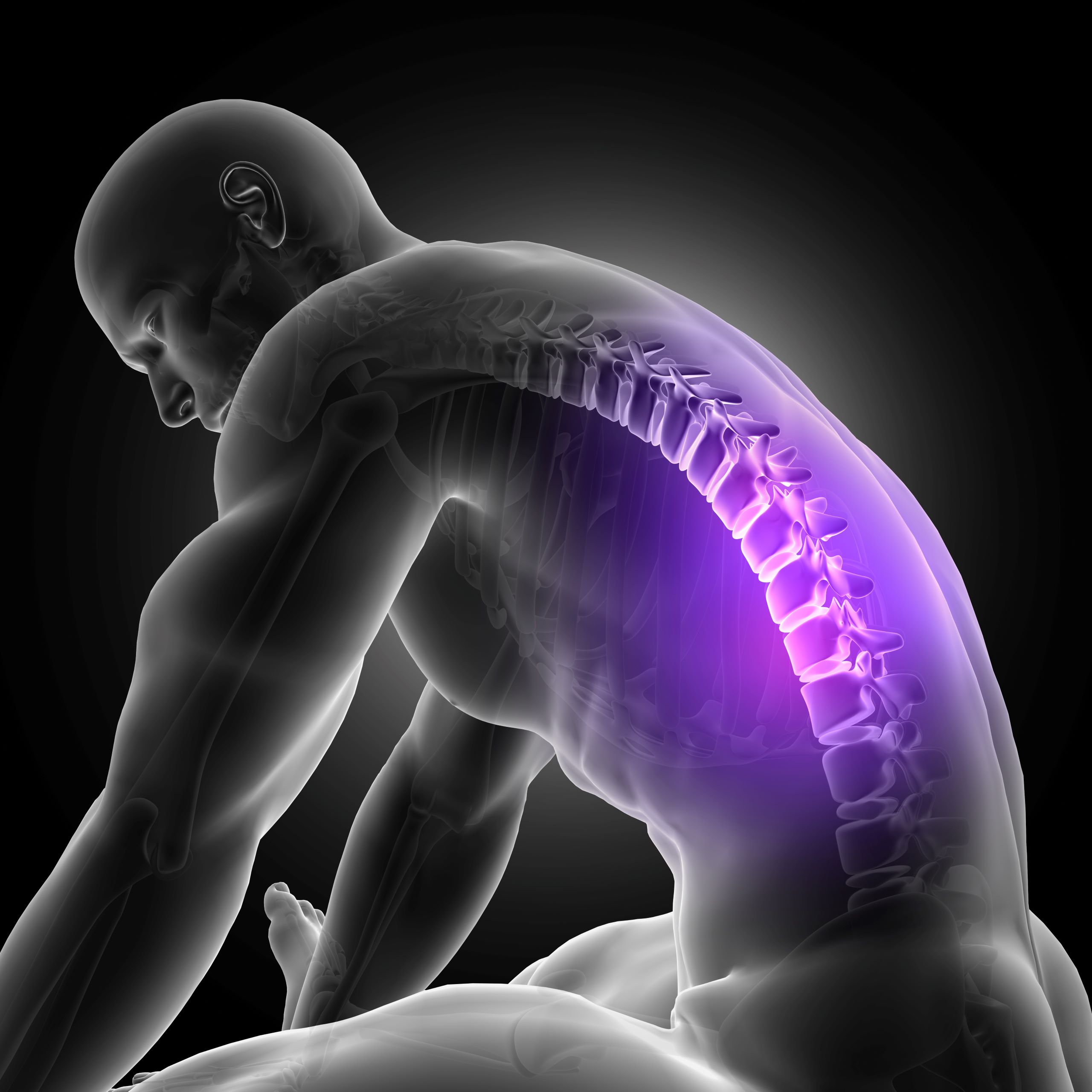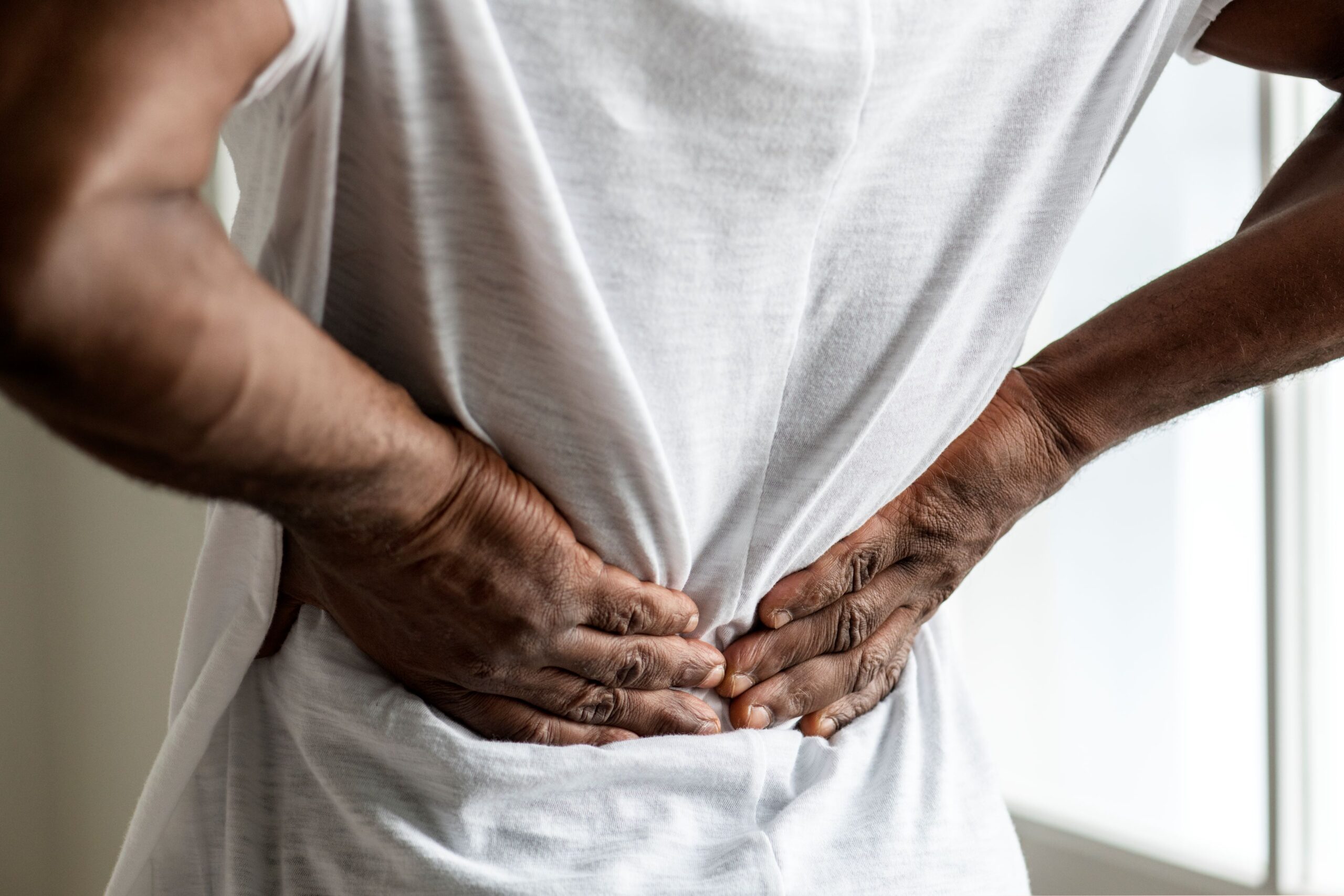Understanding Spinal Stenosis
Spinal stenosis, a condition that affects many, is characterized by narrowing the spaces within your spine. As a result, the narrowing pressures the nerves that travel through the spine. This condition most commonly occurs in the lower back and the neck. While some people with spinal stenosis may not experience any symptoms, others may suffer from pain, tingling, numbness, and muscle weakness [1] [2].
The Primary Causes of Spinal Stenosis
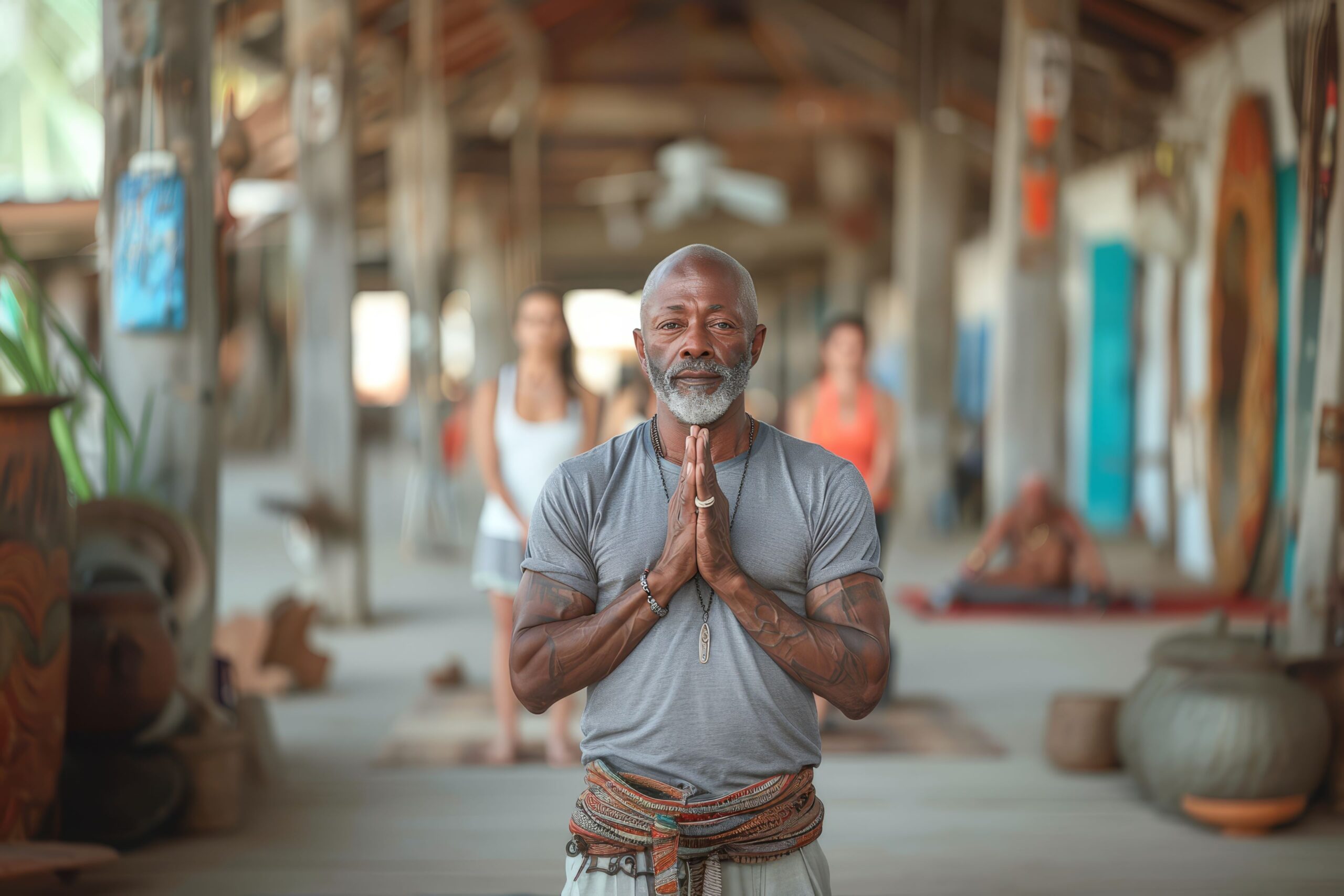
- Aging: The wear and tear on our spine can lead to conditions such as osteoarthritis and the formation of bone spurs, which narrow the spinal canal.
- Herniated Disks: Disks that act as cushions between your vertebrae will dry out and crack over time. The soft inner material escapes and presses on the spinal cord or nerves.
- Thickened Ligaments: As we age, spine ligaments can become stiff and thickened, bulging into the spinal canal.
- Tumors occur when abnormal growths form inside the spinal cord. The membranes cover the space between the spinal cord and vertebrae.
- Spinal Injuries: Trauma can cause dislocations or fractures of one or more vertebrae. As a result, the displaced bone from the spinal fracture damages the contents of the spinal canal [1] [2].
Symptoms of Spinal Stenosis
Symptoms of spinal stenosis vary depending on the location and severity of the condition. Common symptoms include:
- Pain: This can occur in the neck or lower back.
- Numbness or Tingling: Often felt in the extremities, such as arms or legs.
- Weakness: Muscle weakness can occur in the arms or legs.
- Balance Problems: Difficulty walking or maintaining balance.
- Bladder or Bowel Dysfunction: In severe cases, spinal stenosis can affect bladder or bowel control [1] [2].
Diagnosing spinal stenosis may involve medical history, physical examination, and imaging tests such as X-rays, MRI, or CT scans. These tests help to pinpoint the location and extent of the narrowing in the spine [1] [2].
Treatment options for spinal stenosis range from conservative methods to surgical interventions:
- Medications: Pain relievers, anti-inflammatory drugs, and muscle relaxants can help manage symptoms.
- Physical Therapy: Exercises to strengthen and stretch the muscles around the spine can help alleviate symptoms.
- Steroid Injections: Corticosteroid injections can reduce inflammation and relieve pain.
- Surgery: In severe cases, surgical procedures such as laminectomy, laminotomy, or spinal fusion may be necessary to relieve pressure on the spinal cord or nerves [1] [2].
Living with Spinal Stenosis
Living with spinal stenosis can be challenging, but there are ways to manage the condition and maintain a good quality of life. Regular exercise, maintaining a healthy weight, and using proper body mechanics can help reduce symptoms and prevent further injury. It’s also important to follow your doctor’s recommendations and attend regular check-ups to monitor the condition [1] [2].
For more detailed information, you can visit the Mayo Clinic and Cleveland Clinic websites.
Recommended Videos
By staying informed and proactive, individuals with spinal stenosis can manage their symptoms effectively and lead fulfilling lives.
[1]: Mayo Clinic [2]: Cleveland Clinic
I live with lumbar spinal stenosis, for which there is no cure. As stated above, spinal stenosis occurs when the spine’s spaces narrow, putting direct pressure on the nerves. It occurs most in the lower back and the neck (cervical spine). Furthermore, it is mainly attributed to wear-and-tear spinal tissue and wear-and-tear related to osteoarthritis.
It is excruciating and, at times, physically debilitating. However, through an intense physical fitness regimen, I am on a quest to eliminate my pain and discomfort.
With a physical therapist’s aid, I have created a healthy regimen to accomplish this goal. Click here to see some of my other recommended workouts. My physical therapy sessions are once per week, and I complete the rest of my exercises on my own five days a week.
Physical Therapy Friday – Home Exercise Program
SQUAT BURNERS:
A hip abductor exercise that targets glute muscles: gluteus maximus, medius, minimus, and tensor fasciae latae.
Instructions:
- Tie an elastic band onto the lower thighs 2-3 inches above the knees.
- Sit back in a squat position and push your butt out. Do not overarch the lower back during the process.
- While keeping both feet on the ground, with one leg, externally rotate the knee as out as possible and return to the neutral position.
- Repeat the same for the opposite leg.
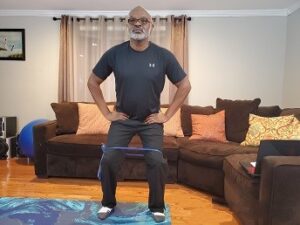
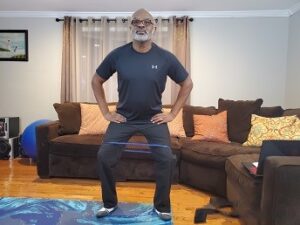
Repeat: 15 Times
Complete 3 Sets Perform 1 Time p/day
LATERAL MONSTER WALK w/ BAND AT THIGHS
Targets gluteus maximus and medius, quads, and knee stabilization.
Instructions:
- Tie an elastic band around the center of both thighs.
- Sit back in a squat position and push out your butt. Do not overarch the lower back.
- While in the squat position, begin walking sideways in sumo style. Be sure to keep the tension on the band. Take several steps during the movement.
- Now, in the opposite direction, in the same manner, until you return to the starting spot.
- Repeat

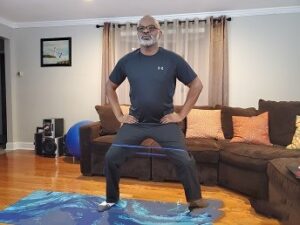
Repeat: 20 Times
Complete 3 Sets Perform 1 Time a Day
MONSTER WALK w/ BAN AT ANKLES
Targets glutes, quads, and hip abductors.
Instructions:
- Tie an elastic band right above your ankles.
- Sit back in a squat position and push out your butt. Do not overarch the lower back.
- While in the squat position, begin walking forward in sumo style. Be sure to keep the tension on the band. Take several steps during the movement.
- Now, in reverse the same manner until you return to the starting spot.
- Repeat
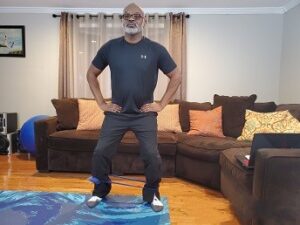
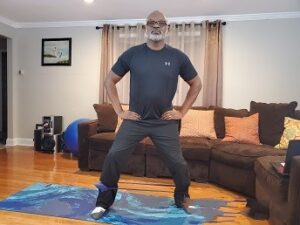
Repeat: 20 Times
Complete 3 Sets Perform 1 Time a Day
STANDING SINGLE-LEG FIRE, HYDRANT
Activates the glutes, hips, and deep core muscles.
Instructions:
- Stand on a stable surface(for extra balance, hold onto a chair or sturdy object). Slightly bend the knees into a squat position.
- With the hips level and knees bent, lift your leg out to the side and behind you.
- Keep your abs tight and core engaged.
- Concentrate on not allowing the elevated hip to move forward.
- Concentrate so as not to arch your back.
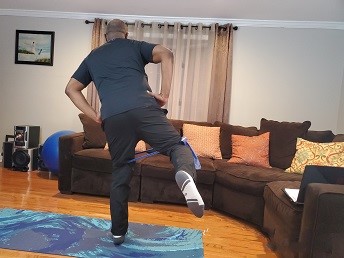
Repeat 3 Times Hold 20 Seconds
Complete 3 Sets Perform 1Time a Day
HIP ABDUCTION-SIDE LYING
Targets gluteus maximus and medius quads.
Instructions:
- Lay on your side and rest your head on your arm.
- Slowly raise your top leg to the side.
- Keep your knee straight and keep your toes pointed forward the entire time.
- Keep your leg in line with your body.
- Bend your bottom leg to help stabilize your body.
- Move your top leg up and down ten times
- Now, move it back back ten times in each direction.
- Then move the leg into a circle ten times
- Finally, move in reverse circles ten times
Perform 10 Times
Complete 3 Sets Perform 1Time a Day
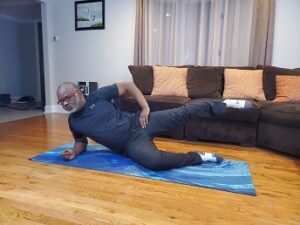

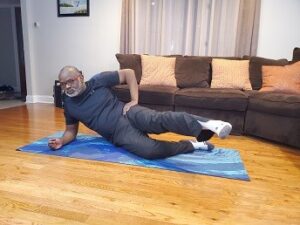
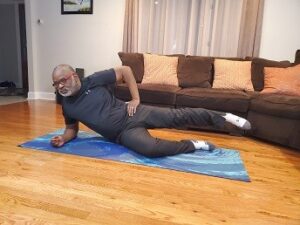
Perform 10 Times
Complete 3 Sets Perform 1Time a Day
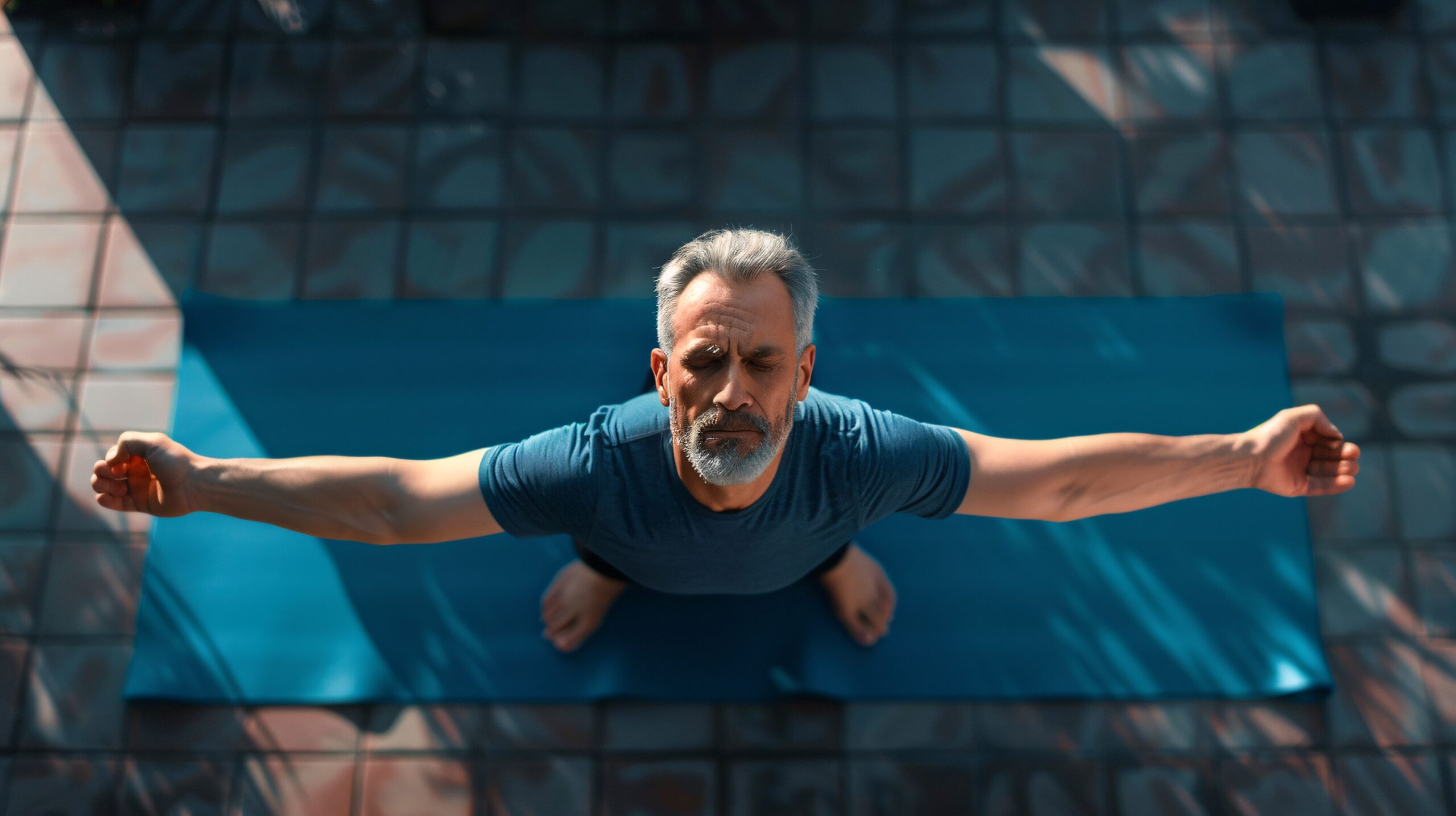
Before starting any new health and fitness program or taking supplements, it’s crucial to consult with your healthcare professional. They can provide personalized advice based on your medical history and current health status, ensuring your new regimen is safe and effective. This step helps prevent potential health risks and ensures that any changes you make are beneficial and sustainable in the long run. Your healthcare professional is your best resource for making informed decisions about your health and wellness journey.
Source:
- Spinal stenosis – Symptoms and causes – Mayo Clinic
- Spinal Stenosis: What It Is, Causes, Symptoms & Treatment
- Spinal stenosis – Wikipedia
Bing Copilot, AI software, GPT-4, partially generated this article. Endless Summer Fitness will continue experimenting with similar software; however, our author will create most articles and fitness programs.



